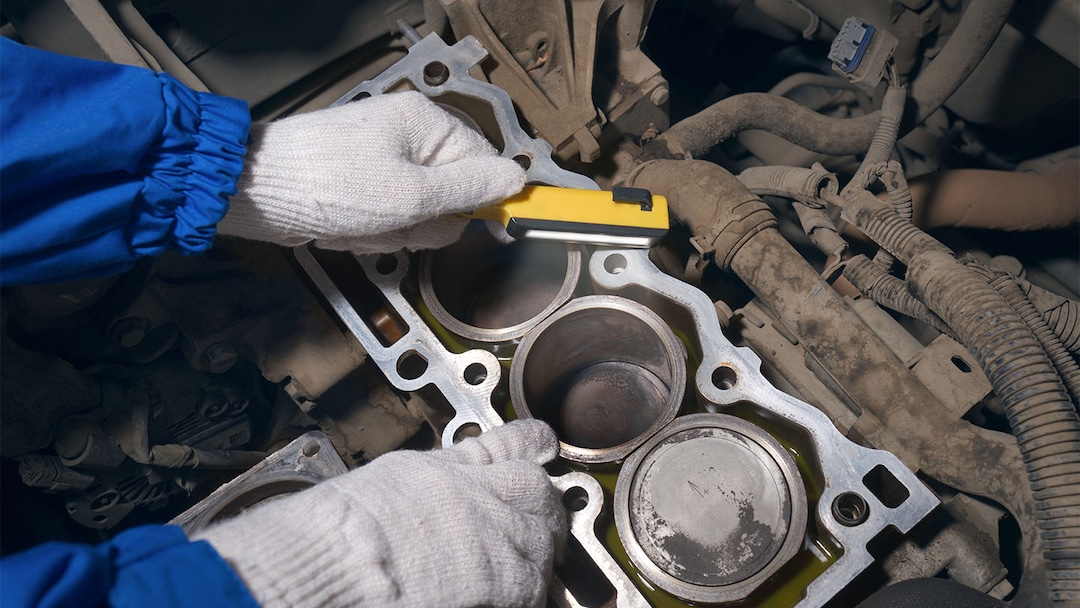What is a head gasket and how can you tell if it’s blown?

Quick insights
- A head gasket is an important part of the internal combustion engine that seals the cylinder head to the engine block.
- A failed head gasket may be caused by several factors, such as overheating and improper installation, and can result in a damaged engine.
- With regular maintenance checks and monitoring, you can help prevent a blown gasket.
A blown head gasket makes your car vulnerable to leakage and can damage its engine. Let’s review what a blown head gasket means and how to prevent it.
What is a head gasket?
A head gasket is what seals the cylinder block and engine head and it creates a pressure-type seal between various systems within your engine. They can come in different forms depending on what type of car you drive. This part of your car helps avoid compression from leaking out of your compression chamber in addition to coolant and oils from leaking and mixing together. Essentially, a head gasket acts as a barrier to help keep pressure in the engine where it belongs.
This small but important piece of your car can get blown due to reasons such as overheating, normal wear and tear and more.
What causes a blown head gasket?
There are a few reasons why you might have a blown head gasket, including:
- Overheating: Extreme engine temperatures can cause the head gasket to fail due to material breakdown.
- Improper installation: If a head gasket has been improperly installed or repaired, this could lead to a blown head gasket. Incorrect torque specifications and uneven surfaces can lead to head gasket failure.
- Engine pre-ignition or detonation: High combustion pressures can physically damage the gasket.
- Normal wear and tear: Over time, it is generally normal for head gaskets to degrade naturally due to constant exposure to high pressures and temperatures.
Signs of a bad head gasket
Since head gaskets serve an important role for safe driving, it’s helpful to learn the signs of a blown head gasket. These include, but are not limited to, the following:
- Overheating engine: This is one of the most common signs of a bad head gasket and often occurs due to coolant leakage.
- White smoke from tailpipe/exhaust: Indicates coolant burning in the combustion chamber.
- Milky oil or oil contamination: Coolant mixing with the engine oil, which may be visible on the oil cap or dipstick.
- Bubbling: Bubbling may occur in the radiator and the coolant reservoir.
- Loss of engine power and rough engine performance: Due to loss of compression and improper combustion.
- External leaks: Coolant or oil visibly leaking from the area between the engine block and head.
If you start noticing any of these signs, turn off your engine and consult with a professional—do not try to release the pressure yourself. You may need to get the gasket replaced, and if so, make sure it meets the requirements of the specific make and model of your vehicle, per your manufacturer's guidelines.
How to prevent a blown head gasket
To help prevent a blown head gasket, you can do the following:
- Regular maintenance: Keep the cooling system in good condition by making regular coolant changes and checking for leaks.
- Monitor engine temperature: Check to make sure the thermostat and radiator are functioning properly to prevent overheating.
- Use high-quality parts: When replacements are necessary, use high-quality gaskets if possible.
- Follow torque specifications: During head gasket installation, adhere strictly to the manufacturer’s torque specs and sequence to avoid uneven pressure on the gasket.
In conclusion
Head gaskets are important parts of the larger complex structure of a vehicle. You can look for signs of head gasket failure, which could include coolant leakage or an overheating engine. Regular checks of your car’s performance can be a helpful way of maintaining a healthy head gasket.



